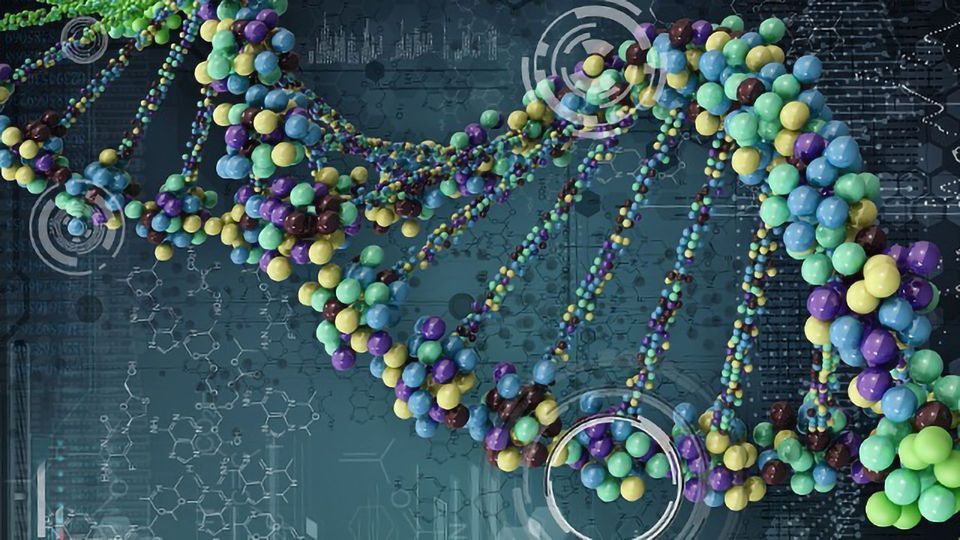Harnessing Synthetic Biology Principles for Pharmaceutical Development

Complete the form below to unlock access to ALL audio articles.
Technology Networks recently had the pleasure of speaking with Dr Francesca Ceroni from Imperial College London, to learn more about synthetic biology approaches and technologies. Ceroni's research team applies synthetic biology principles to mammalian cell engineering for bioprocessing and cell therapy development. In this interview, she discusses how bacterial and mammalian synthetic biology techniques can be harnessed for biomedical and bioproduction purposes, and also considers the role of synthetic biologists in the global fight against COVID-19.
Laura Lansdowne (LL): In your own words, what is synthetic biology?
Francesca Ceroni (FC): There are a few definitions of synthetic biology (synbio). One that I believe is mostly adopted defines it as the engineering of biology. This definition delivers two important elements of synbio, I believe: one, the fact that we always start from nature and from biological systems; the second, that we try to advance the biological information available or employ the existing one, in order to be able to engineer living systems to achieve quantitative description and control on specific biological behaviors or functionalities.
LL: Can you elaborate on the “Design-Build-Test-Learn” synthetic biology cycle?
FC: From the Global Biofoundry Alliance (GBA) we know that “The Design-Build-Test-Learn (DBTL) biological engineering cycle aims to fulfill particular design criteria for a synthetic biology application”. The idea is to adopt the design approach typical of engineering, to have an overall picture of the whole system we want to engineer and how it will behave. To do this, we use mathematical modelling, software design, molecular biology design tools. Then we build our system using standardized, high throughput assembly techniques. We then test the system, using available technologies – flow cytometry, -omics approaches, microfluidics single cell analysis – to measure a given output reporting on the system’s behavior and learn from the results in order to inform a novel DBTL cycle. Some of the time the DBTL cycle is still a trial and error process, but efforts are being focused towards making it more robust and reliable.
LL: Synthetic biology is a highly multi- and interdisciplinary field, could you highlight some of the key approaches/technologies and could you tell us more about the two main design themes – bottom-up and top-down?
FC: The bottom-up approach means we go from the single components of a system and build it trying to achieve a predictable behavior. I have used the approach a lot and would say that we are still at the point where we encounter a lack of knowledge that prevents us from fully capturing the behavior of biological systems a priori and their interactions with cellular hosts. This approach is also the basis for the construction of artificial cells, starting from the basic constituents of cell membranes, gene expression machinery and so on, in an attempt to recreate a cell-like system.
In contrast, the top-down approach involves using unmodified cells and adding synthetic constructs, to perform a task or produce a molecule of interest. This is generally the approach adopted in metabolic engineering applications.
LL: How is synthetic biology being applied to the pharmaceutical industry, has there been any specific advances that have particularly benefitted stages of drug development?
FC: The list of synbio applications, when considering the production of novel therapeutics and drugs, is very long. One example that comes to mind, is Christina Smolke’s research, which is focused on producing plant-derived products using microorganisms like yeasts. Harnessing synbio and metabolic engineering tools, the group is advancing the pace at which we can recover important natural drugs. Others are applying high-throughput strain development and standardization engineering to develop engineered strains able to produce tailored compounds. Directed evolution is for sure a powerful technique, developed by Frances Arnolds, which can allow generation of novel enzymatic specificities and efficiencies in drug production and/or substrate utilization. These are just some of examples.
LL: More specifically, how can synthetic biology principles be applied to mammalian bioprocessing and cell therapy? Can you highlight some of your work in this area?
FC: Synthetic biology has already been applied to cell therapy; if you think about CAR T-cell therapy and CRISPR, those are examples of techniques currently adopted. There is great interest, and my lab also works in this area, in using synbio tools to develop novel biosensors for cell therapy, especially in the effort of developing “smart” systems able to specifically sense cancer biomarkers or other disease biomarkers (e.g. immune suppression ) and respond with targeted drug release. Engineering a smart microbiome is also an area that is gaining lot of attention for targeted drug release in the gut. The same can be said for bioprocessing applications; we are working on designing host-aware synthetic constructs that will allow better cell growth and improved production of industrially relevant proteins. Work has been done already in bacteria, yeasts and mammalian cells to use feedback regulation or novel biosensors capable to respond to intracellular triggers, in order to balance cell growth and product formation. Also, researchers in the field have published on how to improve cell line development and construct design, through promoter design, codon optimization and so on.
LL: Can synthetic biology be harnessed in efforts to fight COVID-19?
FC: Synthetic biologists are for sure at the frontline in the fight against COVID-19. One recent example comes from the synbio London Biofoundry recently focusing on supporting the NHS and increasing COVID-19 testing capability with high-throughput testing and detection for COVID-19. Similarly, OpenCell has recently developed a container-based laboratory optimized for automated RT-qPCR COVID-19 testing. Many synbio companies are directing their efforts into addressing numerous challenges that have arisen as a result of the pandemic. Many researchers are now working on vaccine development using novel tools like cell-free systems and novel expression strategies to make this faster and more effective.
Francesca Ceroni was speaking with Laura Elizabeth Lansdowne, Senior Science Writer for Technology Networks.


